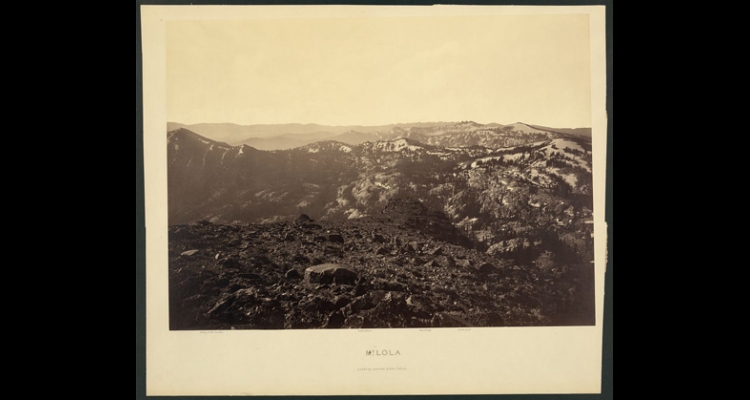Carleton Eugene Watkins
Carleton Eugene Watkins, preeminent photographer of the American West, photographed the Comstock during its greatest "boom" period, in 1876 and 1878. Watkins is best known for his photographs of pristine landscapes, but he was equally adept at capturing industrial subjects. Thus, he was well-qualified to capture the varied terrain of Nevada, from the forests of Lake Tahoe to the mountainous Virginia City. His panoramic views of Virginia City are marvels of artistry, documenting an era of unimagined prosperity.
Born in Oneonta, New York, Watkins emigrated to California in 1851. He took up photography a few years later, and by the 1860s had his own gallery in San Francisco. He traveled constantly and worked steadily from the 1850s to the early 1890s, producing approximately 5,000 views, a feat rivaled by few nineteenth-century photographers. His iconic photographs of Yosemite brought awards and national fame, but he never rested on his laurels. Indeed, he actively sought commissions and traveled throughout the West. After the devastating loss of his gallery and all his negatives to bankruptcy in 1876, he set about building up a new inventory under the rubric of "Watkins's New Series." It was just after this period that Watkins headed for Nevada.
Watkins arrived in the fall, with his photo wagon and materials atop a flat-bed rail car on the Central Pacific Railroad, courtesy of his friend Collis P. Huntington. He began in Tahoe, where his photographs capture the complexities of the region. Images of verdant forests and a pristine lake give way to scenes of logging operations. The forlorn tree stumps and scraggly trees in the foreground of "Glenbrook Bay, Lake Tahoe" show how parts of the lake had been denuded, fed to the maw of the sawmills, tiny but visible along the lakeshore in the middle distance. A series of views made for H.M. Yerington and D.L. Bliss's Carson & Tahoe Lumber & Fluming Co. brings this process to its conclusion: the immense forests have been converted to endless piles of wood, stacked alongside the newly built railroad that would transport it to the Comstock.
The lumber, used for building and fuel, was vital to the economy of the Comstock. Watkins traveled from Tahoe to Virginia City, photographing the many mills along the Carson River. He made industrial portraits of close to sixty of the most significant mills and mines in Virginia City, American Flat, Gold Hill, and Silver City. The images are at once simple and rich: they depict their subject, but close observation imparts a wealth of detail, from the sociological (people, clothing) to the technological (machinery, equipment, raw materials).
Watkins came to the Comstock at a particularly momentous time: October 26, 1876 was the year-anniversary of the great fire that nearly leveled the town. His three-part panorama of Virginia City, looking west toward the city, showcased the area's amazing capacity for rebirth. His viewpoint also highlighted the city's utter dependence on mining: hoisting shafts, reduction works, and tailing piles fill the foreground, while the tiny homes and commercial buildings cling to the terraced hillside of Mt. Davidson.
Watkins returned to the Comstock in 1878. Though the district was on the edge of a bust, few knew that. Excitement over the potential for the Sierra Nevada Mine to become the next big producer on the Comstock was high, with articles on its progress and prospects appearing daily. Watkins took several views of the site, showing it from a variety of angles. He also photographed around the city, which had seen even more development in the intervening two years. Watkins made another panorama, in four parts, from the water flume facing east. This stunning panorama presented the city at its commercial, financial, and cultural zenith. Prosperity and pride were evident everywhere, from the Piper's Opera House renovations to the new steeples on the local churches.
These views show the Comstock at its zenith, just before its long decline. The trajectory of bonanza to bust would parallel Watkins's own professional life. In the fifteen years after his Nevada sojourn, he continued to grow as an artist, making some of the best pictures of his career. At the height of his creative powers, in the early 1890s, failing eyesight and poor health forced him to effectively retire. The San Francisco earthquake and fire of 1906 destroyed his photographs and his studio, and shortly thereafter he was committed to the Napa Hospital for the Insane. He died in 1916, buried in an unmarked grave.
Article Locations
Related Articles
None at this time.
Further Reading
None at this time.
